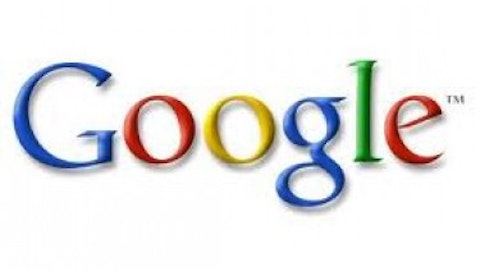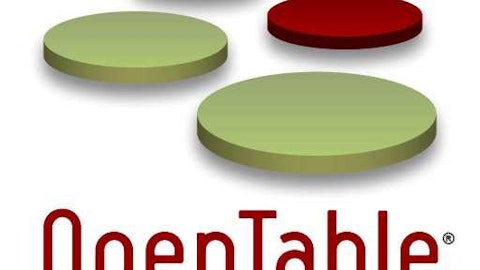
In stark contrast to LinkedIn Corp (NYSE:LNKD)’s IPO, Facebook Inc (NASDAQ:FB)’s was nothing short of a fiasco – from concerns over the company’s unproven revenue model, to botched trading on the NASDAQ on opening day, to litigation surrounding potential pre-IPO information leakages, everything seemed to go wrong. A company originally valued (pre-IPO) in the range of $77-$96 billion saw shares tumble 54% from the original IPO price to a 52-week low of $17.55. But the question remains: does Facebook Inc (NASDAQ:FB) represent a golden opportunity — a forerunner of a new age in technology where interconnectedness reigns supreme? Or is the company slated to fail, as MySpace did nearly a decade ago, due to attempted over-monetization? And by relation, is LinkedIn Corp (NYSE:LNKD) truly a good investment, or just another overinflated internet bubble? Finally, what exactly is internet behemoth Google Inc (NASDAQ:GOOG) doing in the social network space, and is it worth anything?
Facebook’s Opportunity in Monetizing Advertising
In understanding the revenue model of Facebook, it is crucial to ascertain the user’s threshold for advertising fatigue. With what began as small display ads on a user’s right panel, Facebook Inc (NASDAQ:FB) has since rolled out targeted advertisements directly in the News Feed. While this may be seen as an invasion of user space, Facebook avoided over-bombardment. Further, not all targeted advertising is bad: for example, if a user is interested in fitness, they would surely enjoy seeing an advertisement for 50% off their favorite brand of sneakers at a local retailer in their News Feed. What originally started as a simple way to connect to friends has now has become an interesting way for users to discover products.
As analysts and industry experts are still balking from the MySpace days, there exists a ripe and under-appreciated opportunity for Facebook to get it right. The company has quietly launched promoted posts, sponsored stories, Facebook gifts and offers, and location-based ads without disrupting the user experience. In addition, with 49% of revenues coming from the US and Canada, where advertising revenues are the highest margin, the company can continue to drive up advertising impressions without the overarching risk of lower developing market ad revenues overtaking the revenue share. Thus, meaningfully monetizing user engagement is not as wrought with difficulties as one might assume, and presents a unique opportunity.
Facebook’s Underlying Fundamentals and Q1 Results
Facebook Inc (NASDAQ:FB) has already demonstrated that they are achieving profitability, with a net income of $219 million–a $14 million increase from the same quarter a year ago. The company’s pretax profit grew from $1.91 to $2.21 billion over the same period. While still in growth mode, as indicated by its 37% year over year revenue growth, there is a clear long-term monetization strategy in place.
On May 1 of 2013, Facebook Inc (NASDAQ:FB) reported its first quarter earnings, beating the Street’s revenue estimates ($1.46 billion, a 38% increase year over year) but missing on Non-GAAP EPS at $0.12 (flat). Advertising revenue increased 43%, daily active users increased 26% year over year to an average of 665 million average in March, and monthly active users reached 1.11 billion, a 23% increase from the same time a year ago. A few short-term headwinds, such as the departure of the Chief Accounting Officer David Spillane, and increased headcount and infrastructure spending ($1.08 billion) tempered post-earnings trading, but we should look at the results as an indication that the company is moving in the right direction: investing in the diversified monetization platforms, still growing revenue, and proving their active user count is far from saturation. Clearly, the large network of users – the company’s most valuable asset – and the database of information about them will be a fertile grounds for advertising monetization over the next few years.
LinkedIn: Still an Internet Darling
In additional to generating revenue from online advertisements, LinkedIn sells recruitment services to companies and premium account subscriptions to users. In LinkedIn’s most recently reported Q1 earnings release, the company boasted 218 million members globally (representing a 36% year over year growth rate), a surprising 64% of which are located outside of the United States.
LinkedIn Corp (NYSE:LNKD) is a company that possesses strong underlying fundamentals and key metrics. In Q1, revenue was $324.7, a whopping 72% increase from the prior year. The company’s three business segments (Talent Solutions, Marketing Solutions, and Premium Subscriptions) each comprise healthy percentages of the total business. The company continues to launch new products, including a new version of its smartphone applications; Contacts, a new contact management system; and products that enrich LinkedIn’s content system — including the ability for members to include rich media in their professional profiles, and content “channels” that give users the ability to follow a myriad of professional subjects they might be interested in.
LinkedIn’s current stock price is above $180 — a whopping 58% increase year-to-date. While the price is justified given LinkedIn’s track record of proven management execution, some may consider it to be overinflated. As such, it would be advisable to exercise patience by watching the price over the second and third quarters to determine the best entry point.
Google+: Not a Significant Social Network Player
Though not as innovative as Facebook Inc (NASDAQ:FB) and LinkedIn, Google Inc (NASDAQ:GOOG) has made some admirable strides in the social networking arena. Google has the ability to integrate Google+ (Google’s social networking site) into its wide array of other services, for the purposes of simultaneously enhancing the entire user experience. Google+ also integrates other services such as “Profiles,” “Hangouts,” and “Sparks,” and boasted 400 million users at the end of last year.
While it may seem like an easy win for a large and successful powerhouse such as Google, and thus a ripe opportunity for the company to capitalize on its extensive network of websites, the distinct social and professional networks that Facebook and LinkedIn have built make it difficult for a third competitor to enter. Therefore, purchasing Google stock on the basis that their social platform, Google+, will be revenue-generating should be avoided.
Conclusion: Buy Facebook, Wait to buy LinkedIn, Avoid Google+
Numerous factors indicate that it is an opportune time to buy Facebook, wait on the sidelines to buy LinkedIn, and discount Google+ as a driver behind Google’s stock price. Facebook Inc (NASDAQ:FB) is investing pragmatically in the right areas; judging from the carefully targeted advertisements served on the current News Feed and elsewhere, it is evident that Facebook has a clear and ripe monetization opportunity that is not yet clearly understood. In addition, proven profitability and a continuously growing user base show that the company is slowly and surely proving they are capable of execution just as much as attracting new users. LinkedIn, on the other hand, also represents a company with a great track record of management execution and a solid monetization plan; however, it is no secret that the company has great potential, and therefore should be watched before making any investment. Overall, it is clear that internet networking is surely an interesting sub-sector of the technology arena to watch, and Facebook and LinkedIn both represent unique opportunities to take part in the space.
The article Facebook’s Opportunity originally appeared on Fool.com and is written by Colin Tweel.
Colin Tweel has no position in any stocks mentioned. The Motley Fool recommends Facebook, Google, and LinkedIn. The Motley Fool owns shares of Facebook, Google, and LinkedIn. Colin is a member of The Motley Fool Blog Network — entries represent the personal opinion of the blogger and are not formally edited.
Copyright © 1995 – 2013 The Motley Fool, LLC. All rights reserved. The Motley Fool has a disclosure policy.

